Eber’s water towers 2011
The leading trade journal in Sweden, VA-tidskriften Cirkulation has since 1998 an article series under the heading Ebers vattentorn (Eber’s water towers), where Eber Ohlsson with text and photo presents interesting water towers in the world (except Scania and Sweden). Below is a free translation to English of these texts.
Eber’s water towers in Cirkulation 1/2011
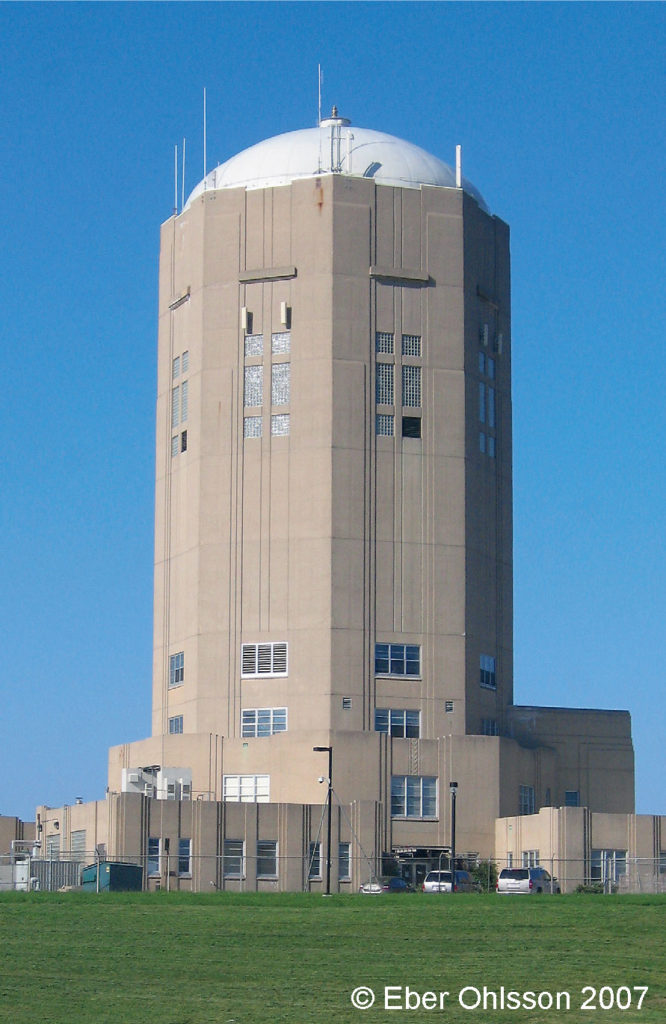
A free translation to English:
The largest water-borne disease in the U.S. hit the city of Milwaukee in 1993, when drinking water was contaminated by Cryptosporidium and caused some 50 deaths. More positively, was it in 1938, when a water tower was buildt in Art Deco at the water plant, an architecture style, as was cherished in the U.S. in the 1920s and 30s, and is exemplified in famous skyscrapers.
Even if verticality is common, there is few water towers in the United States in this style. The octagonal building, with a spheroidal reservoir of 3800 m³, has a stone facade on the outside of the steel skeleton. Waterworks office houses since water production ceased in 2001, other municipal administrations.
Published 2011-02-16
Eber’s water towers in Cirkulation 2/2011
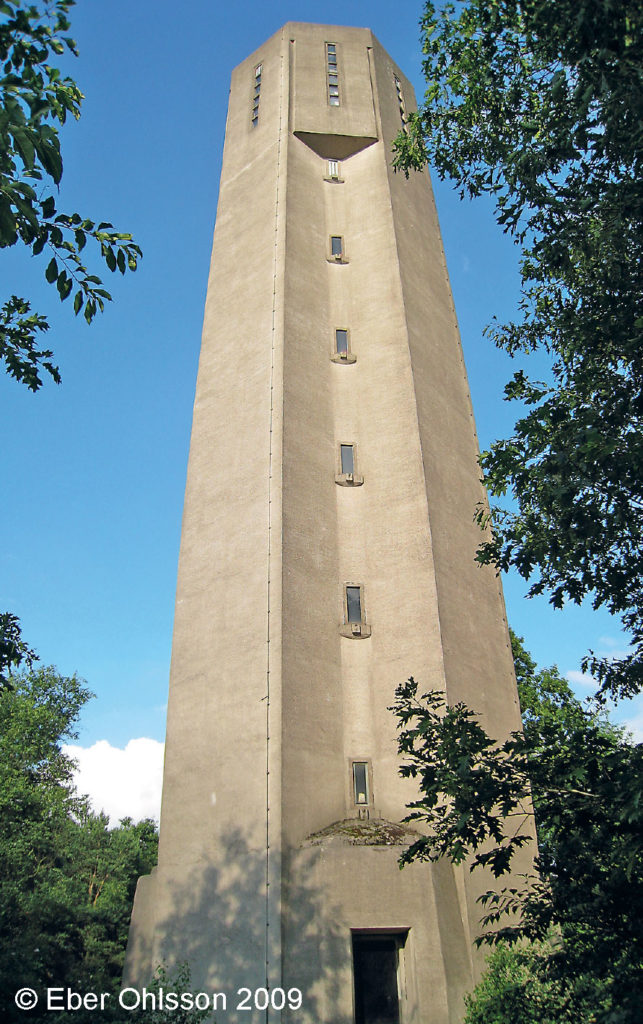
A free translation to English:
When the Netherlands in old times wanted to communicate with their colonies, for example with the almost antipodes colony that is present Indonesia, it was necessary when the technology made it possible to have a large radio transmitter. One such facility, designed by architect J. M. Luthmann was built on a heath near Apeldoorn.
A cathedral-like main building, and since 1922 a 38 meter high water tower with a reservoir of 110 m³ water to cool down the heath from the radio tubes, still stands on the place called Radio Kootwijk. Now, there are no colonies and communication is replaced with other technologies.
Published 2011-03-23
Eber’s water towers in Cirkulation 3/2011
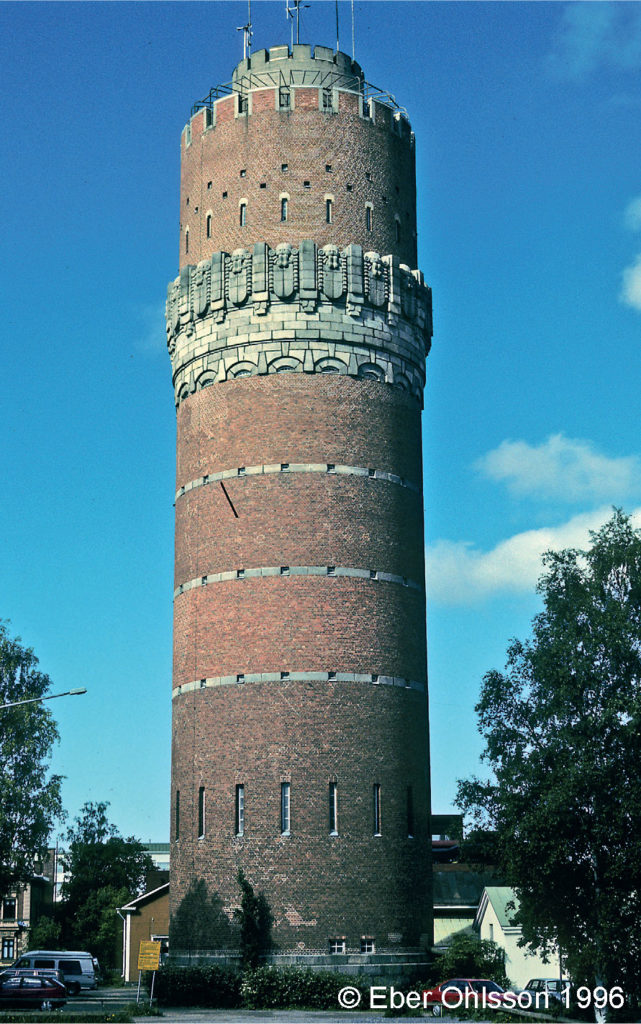
A free translation to English:
In Finnish Österbotten stood there until the 1950s, Vasa on the top of the place name signs and Vaasa thereunder, when you approached the city. It showed that there was a Swedish-speaking majority here. But since then the majority has shifted, so now is it standing Vaasa on the top.
At the time when Finland was a grand duchy of Russia, was there advertise an architectural competition for a new water tower in the city. The brothers Jussi and Toivo Paatela won and in 1915 was the 47 m high water tower in the Art Nouveau style with a reservoir of 500 m³ completed. For a long time you could walk the 200 steps to the tower’s observation deck and look out over the city.
Published 2011-05-04
Eber’s water towers in Cirkulation 4/2011

A free translation to English:
Borkum is the largest and westernmost of the German East Frisian Islands and consists mostly of marshlands and sand dunes. In earlier times had the islanders there own wells, but with increased population and tourism were there built a waterworks in the sand dunes one kilometer east of the buildings.
Nearer the buildings were there at the same time built a water tower and in 1901 were both in operation. The tower, however, lost its function in 1955, but received in 1983 from the public authority protection as monument and has now got its own conservation association. Northwest of the island is the shoal Borkumriff, known for its lightship and from the radio weather reports.
Published 2011-06-08
Eber’s water towers in Cirkulation 5/2011
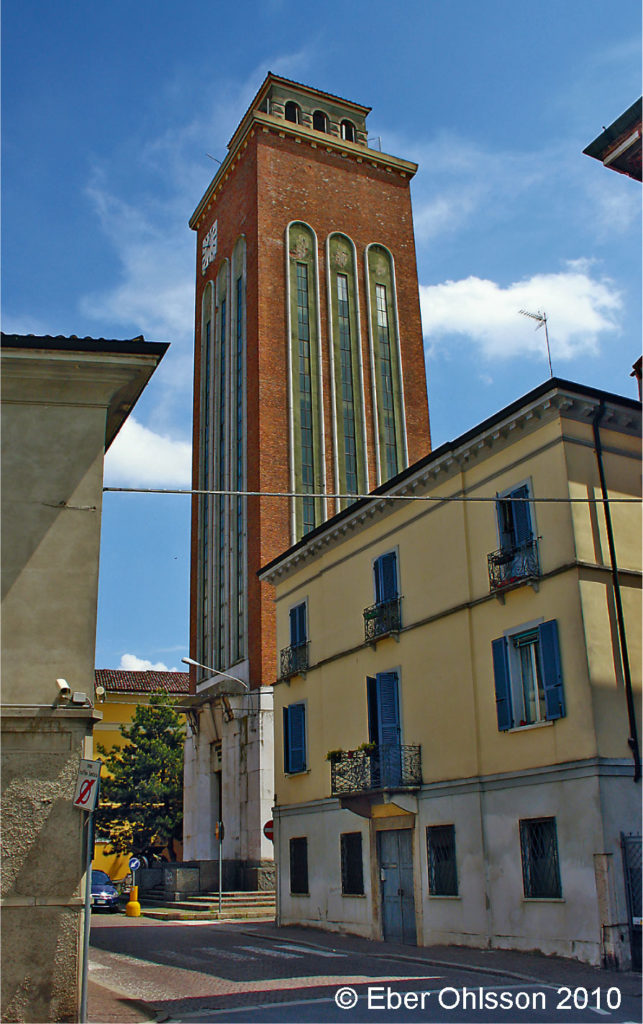
A free translation to English:
Po Valley is a fertile region and Italy’s main industrial centers. On the plain meanders the Po river, the country’s longest river and alongside the river, twenty km from Parma, is the city Casalmaggiore situated beneath an embankment to protect against river flooding.
In the city center was built during the fascist period a water tower, “Torre Littoria”, a name manifesting the then political regime. The architecture is typical of the contemporary public buildings. The square tower, which was completed in 1936, has side length 9 m and a height of 40 m. Today, the tower has only a mobile phone mast function.
Published 2011-08-24
Eber’s water towers in Cirkulation 6/2011
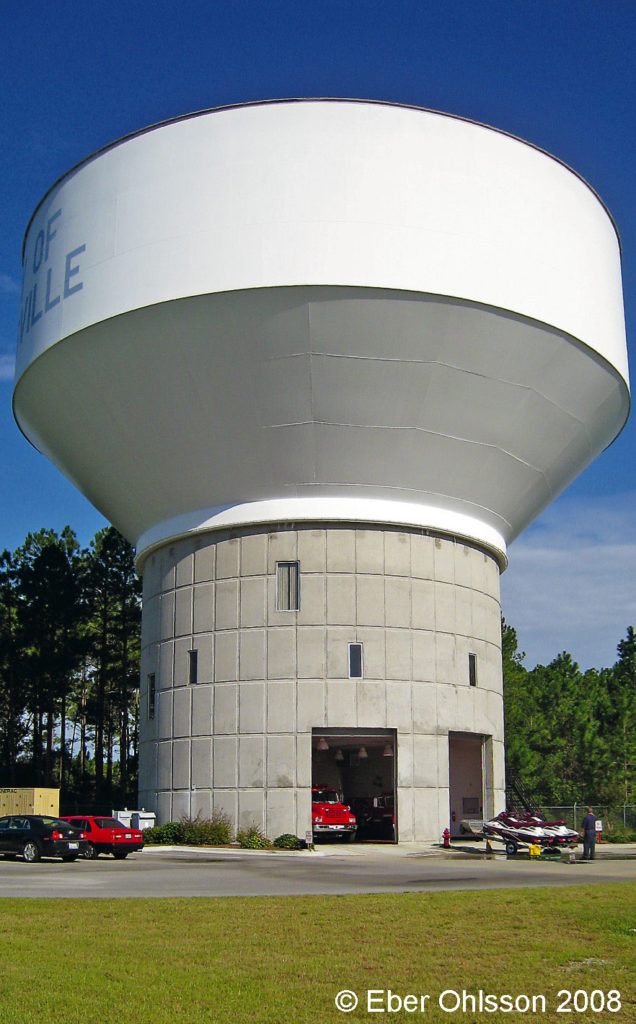
A free translation to English:
What would the fire department be without water? Limited. The fire department is thus living in symbiosis with the water works. When, in the early 1990s, the city of Hinesville in Georgia in the U.S., built a new water tower, holding 9 460 m³ water, the lower space of the tower was not used.
When, 10 years later, the city needed a fire station in the same area, it was realized that it would be cheaper if it was established in the water tower. Today the space below the water reservoir is a fire station on three floors, with fire trucks, sleeping room and exercise room. The firefighters can then sleep soundly, knowing that the water is always close to them.
Published 2011-10-05
Eber’s water towers in Cirkulation 7/2011
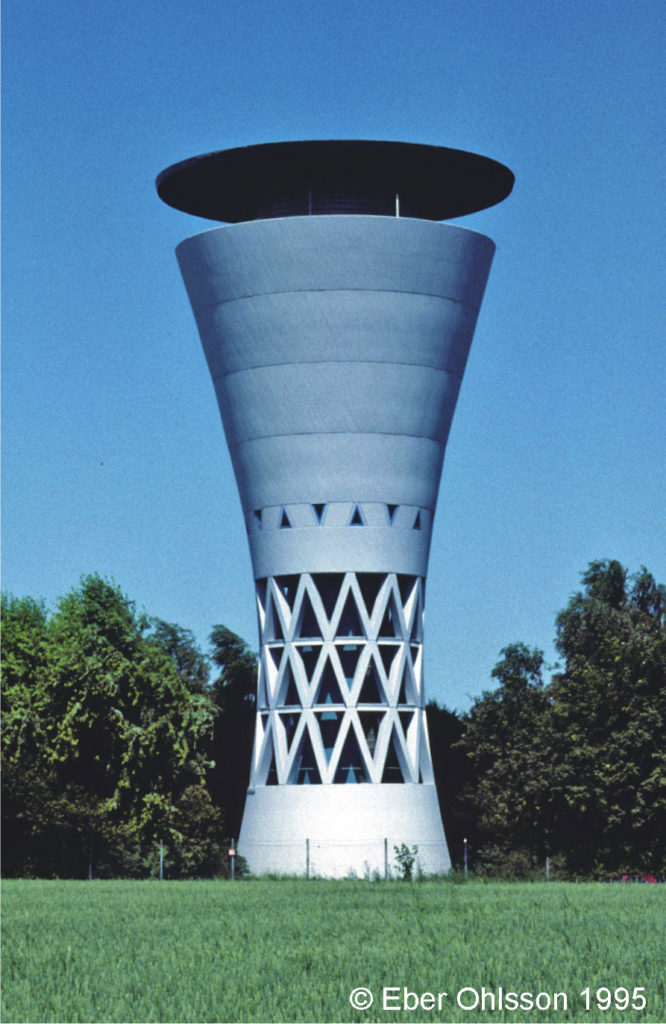
A free translation to English:
The first water tower with a hyperbolic stucture was constructed by the Russian engineer Vladimir Sjuchov to a Pan-Russian exhibition 1896 in Nizhny Novgorod (Gorky during the Soviet era). Hyperbolic towers can be built with straight struts, there the strut angle is narrower in middle than in base and top. It will be both stronger and slender towers.
The 30 meter high water tower in the municipality Möglingen, 15 km north of Stuttgart in the German federal state of Baden-Württemberg, has a reservoir of 400 m³. The tower with a diameter of 9,6 m at the ground, 7 m at the waist and 15,5 m at the top, was designed by architect R Kessler and became operational in 1965.
Published 2011-11-09
Eber’s water towers in Cirkulation 8/2011

A free translation to English:
In 1902 it was built a water tower in the German town Tondern, that was situated in the then Schleswig-Holstein. The 39 meter high brick tower, with a reservoir of 200 m³, the upper corbelling part was covered by slates. When Denmark 1920 regained Nordslesvig [Northern Schleswig], now called Sønderjylland [Southern Jutland], the town was changed name to Tønder.
After the tower ceased operation 1980, it was after a donation 1994 renovated, with the upper part was lift down, rebuilt and replaced. In the now 40 meter high tower with a prospect over the salt marches, it is a permanent exhibition of chairs designed the town’s son, the famous furniture designer Hans Wegner.
Published 2011-12-14
